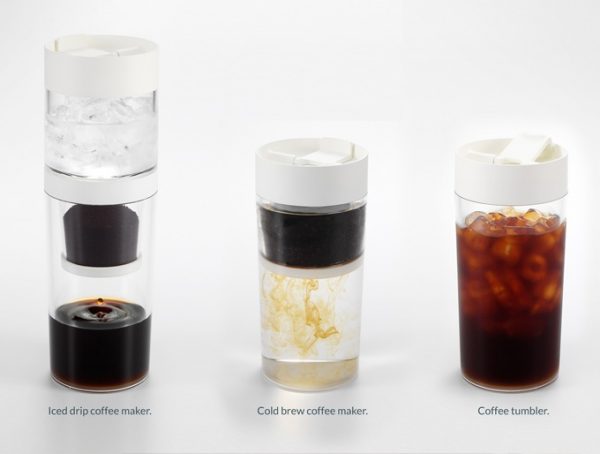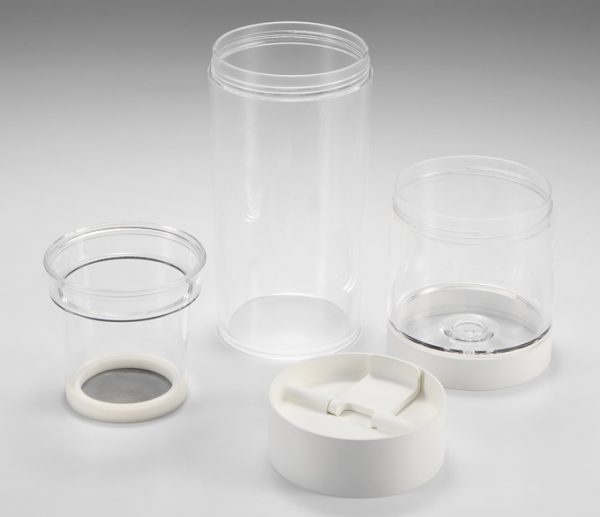Filed under “gaming-related kitchen supplies,” we were recently given an opportunity to review the Dripo coffee maker. While I’m no coffee expert myself, I’m enough of a coffee nerd to be qualified for beverage impressions. So on to our first order of business, just what is this thing?
Easily ripped from Amazon’s product description:
Dripo is a true cold-drip coffee maker that is affordable and easy to use. Also known as Dutch or Japanese style coffee, it uses a unique cold drip method to brew a perfect cup of coffee that brings out the best flavors from your favorite beans. Slow-drip, cold-brew coffee is coffee like you’ve never tasted before, being more aromatic and have more delicate or nuanced flavors with a lighter body.
In shorter terms, it’s the quickest way to make ~12oz of cold-brewed coffee. About two hours of your time, that is. So when it was pitched as a caffeinated compliment to staying sharp in shooters like Call of Duty, we figured it’s at least healthier than energy drinks.

The Dripo was Kickstarted in 2015 and as indicated by the milk carton packaging has the hip crowdfunding presentation that internet-funded projects tend to employ. Inside, users will find the Dripo along with a few inserts and some vague instructions. The assembled tower of reservoirs and straining device fit together in an understandable order, but figuring out the actual process took a few minutes of patience.
My process was to use the same amount of coffee (4 Tbsp aka 1/4 cup) that I’d put through an Aeropress — another cylindrical vacuum-based solution, but for making hot coffee. I’d grind beans and remove the top reservoir, drop them in, and per a recommendation from somewhere would drop a paper filter in to wet on top (for more even water distribution). Following this, the process was as simple as filling the top reservoir, then screwing it down to begin the ice-drip process.
While I waited, I talked with a roommate about how the cold brew was supposed to take a couple hours. He felt it was convenient if you may want coffee a couple hours down the road, but would otherwise sit too long and oversteep. We’re two people who’ve brewed cold brew in a more rudimentary fashion, portion water and grind, stir, come back 12-14 hours later to filter out a cold brew. The difference with Dripo and Dutch coffee makers is that the coffee is cold-drip water filtered through the grind at a steady rate, rather than stewing in a pitcher for half a day. This means that whenever you set it to brew, all you need to worry about is what you’re doing for a couple hours. I’d frequently set a batch to brew before going to bed, then wake up to ready-made iced coffee brewed to the same strength as if I had it right away.
In this way, the Dripo was highly convenient. My previous method for instant iced coffee was simply brewing hot coffee in an Aeropress, then pressing the concentrate over a cup of ice. While this worked well, the flavors change with each method.

With the large batch cold brew I’ve made in the past, the acidity has been noticeably tame, if at all present. It can get a little old at times, the coffee having such a smooth flavor that it feels passive. As a person who prefers lighter beans for their tart notes, I generally like pressing hot coffee out of the Aeropress for the brighter flavor. Let’s call that my go-to method, also easiest to clean up.
Of course, you can also make a small batch of traditional cold brew coffee by forgoing the upper reservoir and allowing the strainer to steep in the tumbler, as pictured. The option is there, but it’s boring compared to what the Dripo brings to the table.
The Dripo’s process landed the coffee somewhere between these two flavors. I’d been using beans from some local roasters in Brooklyn and compared some cups with the iced Aeropress. I found that besides having a new toy, I sort of liked the Dripo flavor profile over the Aeropress. There’s a certain brightness to the coffee when pulled through the Dripo that doesn’t reach an acidic level of hot coffee over ice, but is far more lively than cold-brewing a large batch overnight. I came to prefer the Dripo as a lazy, always-steeping gadget that provided cold coffee at the ready.
Cleanup isn’t too much trouble, as most of the grind can be easily shaken from the mesh filter, but you’ll find yourself rinsing a bit down the drain as well. It’s also worth noting that I didn’t find grind at the bottom of my cup, meaning that the resulting coffee was bright and clear. Great filtering work.

The bottom reservoir is said to double as a tumbler, although I never felt a need to use it. Alongside the fact that the mesh can only be stored inside the tumbler portion, it felt like the Dripo should largely remain assembled when not in use. While a nice feature, it’s the last bullet point. The device is also portable enough to travel with, but the length makes it unwieldy for those short on space.
In a couple instances, I found the Dripo had stopped early on in pulling water through the grind. This could be due to a number of reasons, such as a trapped air bubble preventing coffee from filtering, or too much water in the upper reservoir. I’ll admit to some trial and error, but eventually stopped using the paper filters as they seemed to interfere more often than not. Afterwards, the Dripo didn’t have much issue with consistent brew times.
I also love that it brews small batches, although my first request for the folks who put this together would be upping the final amount from ~12oz to ~16oz. Maybe make it fatter, not taller. The coffee never needed watering down, so it seems the portioning was , but I found most often that I’d come up wanting a little more out of each cup.
Overall, the Dripo is a neat compliment to anyone’s coffee arsenal. Even for casual drinkers. I’d highly recommend it over energy drinks if cold caffeine is what you’re looking for, along with the bonus of a low maintenance gadget. It does great work with whatever beans you’ve got on hand, and priced at what feels competitive with the Aeropress — the “hot” rival on the market. It’s found its way into regular use in my life, but I’m holding out hopes for a larger version.
Thanks to Asylum PR for providing us with the sample used for review.

